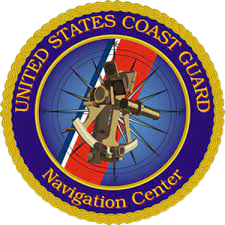1. What is the Vessel Information Verification System (VIVS)?
2. How can VIVS help my AIS unit to be compliant?
3. How can I correct AIS broadcast errors?
4. What is AIS?
5. What vessels are subject to AIS carriage requirements?
6. What is the difference between a class A and class B AIS units?
7. When must AIS be in operation?
8. How often is the VIVS information updated?
9. Why am I unable to find information about my vessel’s AIS unit in VIVS?
10. What should I do if I think I have corrected the error(s) but VIVS still reports it as an error?
11. Where can I find a list of AIS-USCG type approved equipment?
12. Does the MMSI transfer with the Boat after it is sold?
13. I am a recreational boater or I have a voluntary ships license with an AIS unit. Do I have to follow the AIS carriage requirements?
14. Have a VIVS question not answered by the FAQs?
1. What is the Vessel Information Verification System (VIVS)?
The Vessel Information Verification System (VIVS) is a web tool in which a commercial vessel owner (or operator) can verify the accuracy of their static Automatic Identification System (AIS) broadcasted information. AIS static information includes a valid vessel name, call sign, AIS vessel type, Maritime Mobile Service Identity (MMSI), length, beam and AIS ship type. Per the AIS Carriage Requirement (33 CFR §164.46(d)), vessels equipped with AIS must maintain it, ensure it is always in effective operating condition and broadcasting accurately; failure to do so could subject owner/operator to civil penalties not to exceed $25,000 (46 U.S.C. 70119). VIVS has the potential to alert the operator of any AIS static data encoding discrepancies.
VIVS compares broadcasted AIS static data with information from several authoritative sources to verify the authenticity. An operator must accurately broadcast a properly assigned Maritime Mobile Service Identity (MMSI) number and accurately input and upkeep all AIS data fields and system updates (i.e. Vessel Name, Call Sign, standard length, Dimensions A, B, C, D (length and beam), draft (actual or maximum) and AIS ship type. For information on encoding an AIS unit, please click on link for the USCG AIS Encoding Guide.
Generally, it is recommended to follow manufacturer’s instructions when encoding an AIS unit. Per USCG AIS guidance, “Encoding AIS varies by class. AIS Class B are not typically user configurable. AIS Class A are user configurable but certain static data parameters (i.e. MMSI, name, call-sign, type, dimension, etc.) may be password protected by the manufacturer or AIS Installer. Therefore, Class B owners, and Class A owners whom have lost/forgotten their password, should contact your AIS installer, manufacturer, or retailer for instructions on how to encode/recode it.” For information on encoding an AIS unit, please click on link for the USCG AIS Encoding Guide. For more information on AIS.
Per 33 CFR §164.46(a), “AIS is a maritime navigation safety communications system standardized by the International Telecommunication Union (ITU) and adopted by the International Maritime Organization (IMO) that provides vessel information, including the vessel's identity, type, position, course, speed, navigational status and other safety-related information automatically to appropriately equipped shore stations, other ships, and aircraft; receives automatically such information from similarly fitted ships; monitors and tracks ships; and exchanges data with shore-based facilities.” For more information on AIS.
(1) AIS Class A device. The following vessels must have on board a properly installed, operational USCG Type-approved* AIS Class A device:
(i) A self-propelled vessel of 65 feet or more in length, engaged in commercial service.
(ii) A towing vessel of 26 feet or more in length and more than 600 horsepower, engaged in commercial service.
(iii) A self-propelled vessel that is certificated to carry more than 150 passengers.
(iv) A self-propelled vessel engaged in dredging operations in or near a commercial channel or shipping fairway in a manner likely to restrict or affect navigation of other vessels.
(v) A self-propelled vessel engaged in the movement of –
(A) Certain dangerous cargo as defined in subpart C of part 160 of this chapter, or
(B) Flammable or combustible liquid cargo in bulk that is listed in 46 CFR 30.25–1, Table 30.25–1.
(2) AIS Class B device. AIS Class B device in lieu of an AIS Class A device is permissible on the following vessels if they are not subject to pilotage by other than the vessel Master or crew:
(i) fishing industry vessels;
(ii) Vessels identified in paragraph (b)(1)(i) of this section that are certificated to carry less than 150 passengers and that–
(A) Do not operate in a Vessel Traffic Service (VTS) or Vessel Movement Reporting System (VMRS) area defined in Table 161.12(c) of § 161.12 of this chapter, and
(B) Do not operate at speeds in excess of 14 knots; and
(iii) Vessels identified in paragraph (b)(1)(iv) of this section engaged in dredging operations.
Note to paragraph (b): Under 33 U.S.C. 1223(b)(3) and 33 CFR 160.111, a Coast Guard Captain of the Port (COTP) may restrict the operation of a vessel if he or she determines that by reason of weather, visibility, sea conditions, port congestion, other hazardous circumstances, or the condition of such vessel, the restriction is justified in the interest of safety. In certain circumstances, if a COTP is concerned that the operation of a vessel not subject to § 164.46 would be unsafe, the COTP may determine that voluntary installation of AIS by the operator would mitigate that concern. For more information on AIS.
Please click on link for a comparison of Class A and Class B AIS units.
7. When must AIS be in operation?
Per 33 CFR 164.46(d), “vessels required to have AIS must operate it in U.S. navigable waters (as defined in 33 CFR 2.36) at all times that the vessel is navigating (underway or at anchor) and at least 15 minutes prior to unmooring. Should continual operation of AIS compromise the safety or security of the vessel or where a security incident is imminent, the AIS may be switched off. This action and the reason for taking it must be reported to the nearest U.S. Captain of the Port or Vessel Traffic Center and recorded in the ship's logbook. The AIS should return to continuous operation as soon as the source of danger has been mitigated.” For more information on AIS.
8. How often is the VIVS information updated?
VIVS is updated weekly by the Navigation Center (NAVCEN). Updates include any AIS static information that has changed in recent transmissions received by Nationwide Automatic Identification System (NAIS).
9. Why am I unable to find information about my vessel’s AIS unit in VIVS?
VIVS contains AIS static data on vessels that broadcasted on U.S. navigable waterways within the last 30 days. In order for information to display in VIVS, the vessel’s AIS broadcast must be detected by the Nationwide Automatic Identification System (NAIS), no more than 30 days of the VIVS query.
10. What should I do if I think I have corrected the error(s) but VIVS still reports it as an error?
Verify the information is valid from the authoritative source. (As an example, MMSI number should be issued by the FCC or one of its agents and be current) Verify static information is encoded accurately in your AIS unit. If you still believe an error is not valid, please contact NAVCEN by the clicking link below: Please contact us (select "Vessel Information Verification Service (VIVS)" from the pull-down menu, fill in the blanks, and submit your inquiry).
11. Where can I find a list of AIS-USCG type approved equipment?
A listing of all USCG type-approved equipment can be found at the Coast Guard Maritime Information Exchange (CGMIX) [EQList Search, Select: Approval Series Name--Shipborne AIS]. Voluntary AIS users may avail themselves of either an AIS Class A or B device, but, such device must be FCC certified for its use in the United States. For a listing of FCC certified AIS equipment use the FCC OET Equipment Authorization Search Form [Select: Equipment Class--AIS].
12. Does the MMSI transfer with the Boat after it is sold?
The MMSI of an AIS unit does not follow a vessel after the vessel is sold. The previous owner must cancel their registration with the FCC or its agent (for Class B AIS). The new owner must register the vessel in their name with the FCC or its agent (for Class B AIS).
13. I am a recreational boater or I have a voluntary ships license with an AIS unit. Do I have to follow the AIS carriage requirements?
Regulation 33 CFR 164.46(d) - requires all vessels with a properly installed and operational AIS unit to broadcast accurate vessel information including vessel identity, type, dimension, position, course, speed, and navigation status at all times. Failure to do so could subject owner/operator to civil penalties not to exceed $25,000.
14. Have a VIVS question not answered by the FAQs?
Please contact us (select "Vessel Information Verification Service (VIVS)" from the pull-down menu, fill in the blanks, and submit your inquiry).

